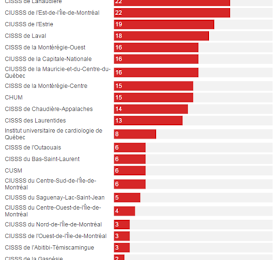Well done, Amy: The implication of pieces and postures like Grudem’s this week impacts young evangelicals.
Evangelical leaders are going to lose an entire generation of Christians in the wake of our current political and social climate. This is not an article asking millennials to leave Evangelicalism because I believe it can’t be saved, nor is this article saying that Evangelicalism is dead. It also is not a proposal of a useful way forward in this“dumpster fire” of an election. It is a plea for reform. It is a big ask of Evangelical leaders to reevaluate the stakes they have put in the ground and ask if there could be a better, more truly Evangelical way. It’s request to leaders in our communities to speak out against the evils that surround and are supported by Trump. Because you’re losing us, and we don’t want to be lost.
Win us back, and let’s complete the work ahead together.
Well done, Theresa:
Theresa Kachindamoto, the senior chief in the Dedza District of Central Malawi, wields power over close to 900,000 people… and she’s not afraid to use her authority to help the women and girlsin her district. In the past three years, she has annulled more than 850 child marriages, sent hundreds of young women back to school to continue their education, and made strides to abolish cleansing rituals that require girls as young as seven to go to sexual initiation camps. With more than half of Malawi’s girls married before the age of 18, according to a 2012 United Nations survey — and a consistently low ranking on the human development index, Kachindamoto’s no-nonsense attitude and effective measures have made her a vital ally in the fight for women’s and children’s rights.
The Olympic Refugee Team, well done:
When International Olympic Committee president Thomas Bach announced the 10 members of the first-ever Refugee Olympic Team in June—after a yearlong global vetting by 17 national Olympic committees and the United Nations Refugee Agency and after countless tryouts in Europe and Africa that resembled nothing so much as the hunt for Willy Wonka’s golden tickets—he clearly intended the impact to redound far beyond sports. “A symbol of hope to all the refugees in our world,” Bach called the squad. “It is also a signal to the international community that refugees are our fellow human beings and are an enrichment to society.
“These refugees have no home, no team, no flag, no national anthem. We will offer them a home in the Olympic Village together with all the athletes of the world.”
A cynic might call this a stroke of marketing genius. What with endless reports out of Rio about depleted budgets, political collapse, social unrest, the Zika virus and the consequent withdrawal of high-profile athletes; amid striking allegations of systematic doping by traditional powers Russia and Kenya; and after making laughable bets that staging recent Olympics in China and Russia would improve those countries’ human rights records, the Olympic brand has taken a savage beating. A bit of humanitarian counterprogramming, smacking of Baron Pierre de Coubertin’s ideals, surely couldn’t hurt.
“We need to remind [people] that sport is a unique tool to improve society,” says Pere Miró, whose IOC title is deputy director general for relations with the Olympic movement. “This is … a kind of hope for some people that can get us back to our roots.”
There’s a voracious little bug destroying forests across the eastern U.S. Scientists say emerald ash borers, exotic beetles imported accidentally from Asia, have killed as many as 50 million trees.
They’re now threatening groves in New York’s Adirondack Mountains that are used to make an iconic kind of baseball bat.
On a sweltering day, at the Rawlings plant in Dolgeville, a humble little sawmill about an hour’s drive west of Albany, workers sort chunks of pale white wood veined with brown. About 40 people work here. They’ve handcrafted baseball bats made from ash wood for more than a century.
The home run in 1951 — the famous “shot heard round the world” — that lifted the New York Giants over the Brooklyn Dodgers in the pennant race was hit with one of these bats. The bats are still a favorite with major leaguers.
Ron Vander Groef, Rawlings’ plant manager, flips through his current roster of players, which includes Andrew Romine, Rob Refsnyder and Manny Machado.
He says ash is popular because these bats don’t shatter as easily as other woods. A lot of the famed Louisville Slugger bats are also made from ash trees cut in New York and Pennsylvania.
But now an emerald-green invasive bug that looks sort of like a fancy grasshopper is threatening forests from Michigan to New York. The larvae chew layers of healthy bark into pulp.
“If the ash borer is not controlled, it’ll wipe out the entire species of white ash,” Vander Groef says. “We will not be able to make any more pro bats or retail bats or anything out of white ash because it will be gone.”
HT: LNMM
In a move that could be interpreted as indulgent or prescient — or both — the U.S. men’s basketball team at the Rio Olympics will stay aboard a luxury cruise ship rather than the spartan facilities at the Athletes’ Village.
It appears the U.S. women will also be living aboard the Silver Cloud, according to media reports.
The men’s basketball team, made up of 12 highly compensated NBA stars, has a tradition of opting for upscale digs ever since professionals were allowed to play in the Olympics in 1992. And the men’s team even stayed on a cruise liner once before, at the 2004 Games in Athens.
Meanwhile, Olympic organizers have been dealing with complaints of incomplete or malfunctioning facilities in the dormitory-style apartments that will house the more than 10,000 athletes at the Games. As Merrit Kennedy reported for The Torch, the Australian team has dealt with several problems, from plumbing and lighting issues to a fire and theft.
Flossing has quietly lost its place among recommendations for daily health, at least as prescribed in the Dietary Guidelines for Americans, which are issued every five years by the U.S. departments of Health and Human Services and Agriculture.
That could be because there’s scant evidence that flossing does much to keep teeth and gums healthy.
“In large epidemiological studies, the evidence for flossing turns out to be fairly weak,” says Tim Iafolla, a dentist with the National Institute of Dental and Craniofacial Research, which is part of the National Institutes of Health.
Iafolla wasn’t involved in drafting the dietary guidelines, but he’s well aware of some of the problems with flossing research. Still, he points out, tracking the long-term benefits of flossing isn’t cheap or easy.
“The condition we’re trying to prevent, which is gum disease, is something that takes years to develop, and most of the studies only last for a few weeks or months,” he says. “So the evidence that we gather from these studies is fairly indirect. We can look at bleeding gums, we can look at inflammation, but we have to extrapolate from that evidence to gum disease.”
A 2011 Cochrane “oral health” review of 12 studies on the effects of flossing found that they “were of poor quality and conclusions must be viewed as unreliable.” The review concluded that there was some evidence that flossing and brushing regularly did appear to reduce gingivitis, compared to tooth brushing alone, but that evidence was weak on how much it reduced plaque. Most trials were too short to determine if flossing could have long-term impacts on things like tooth decay, the researchers who conducted that review concluded.





